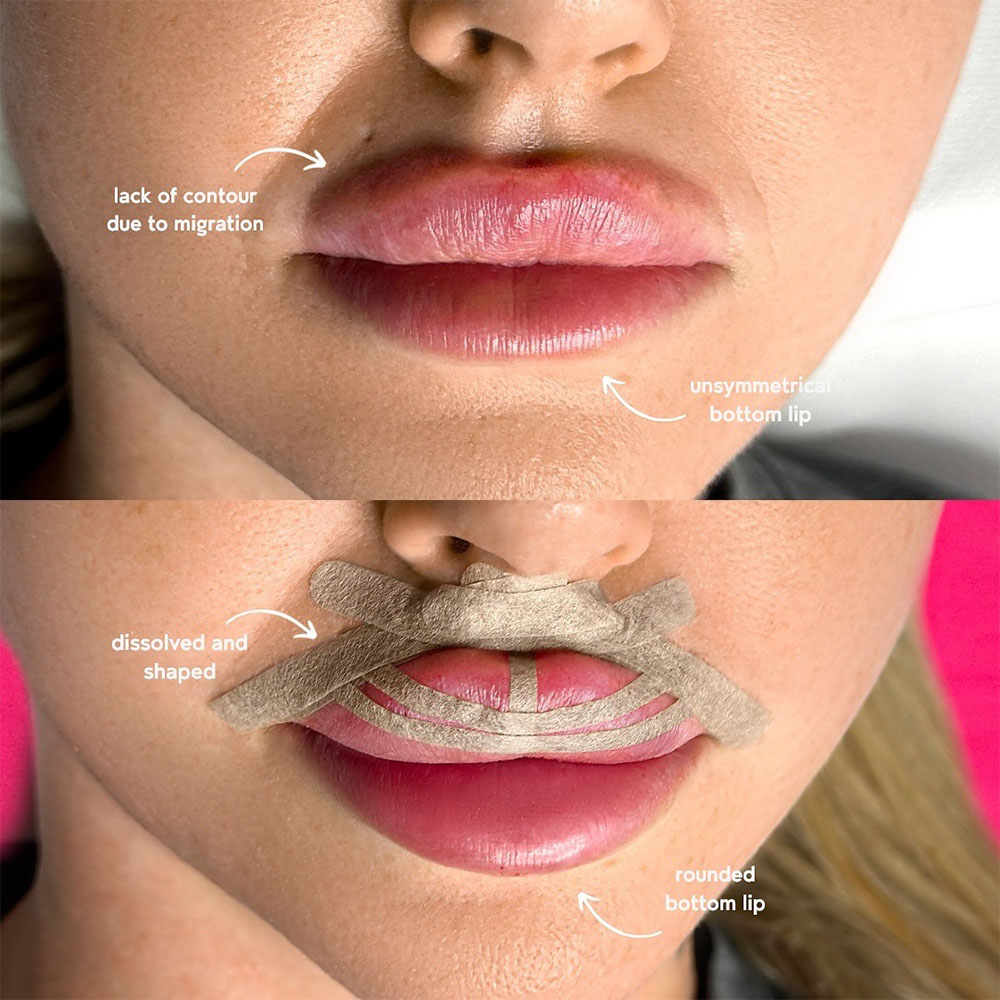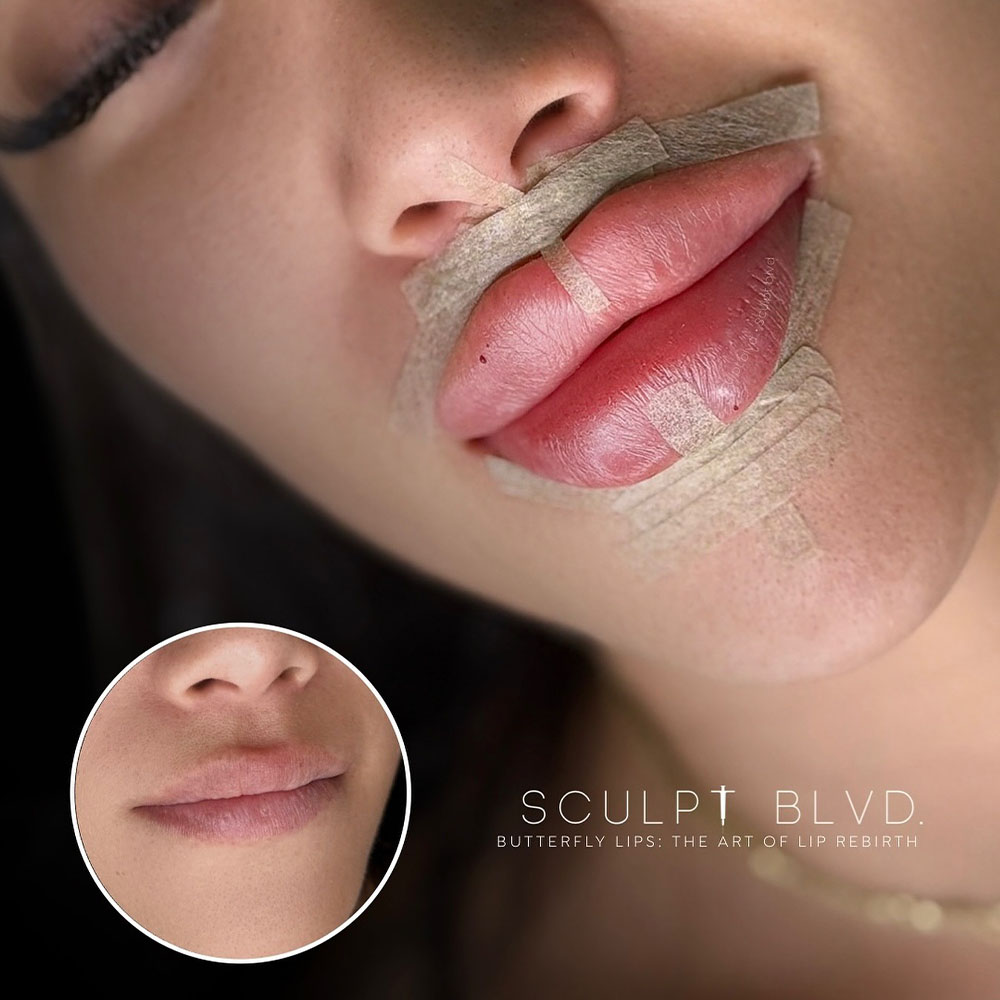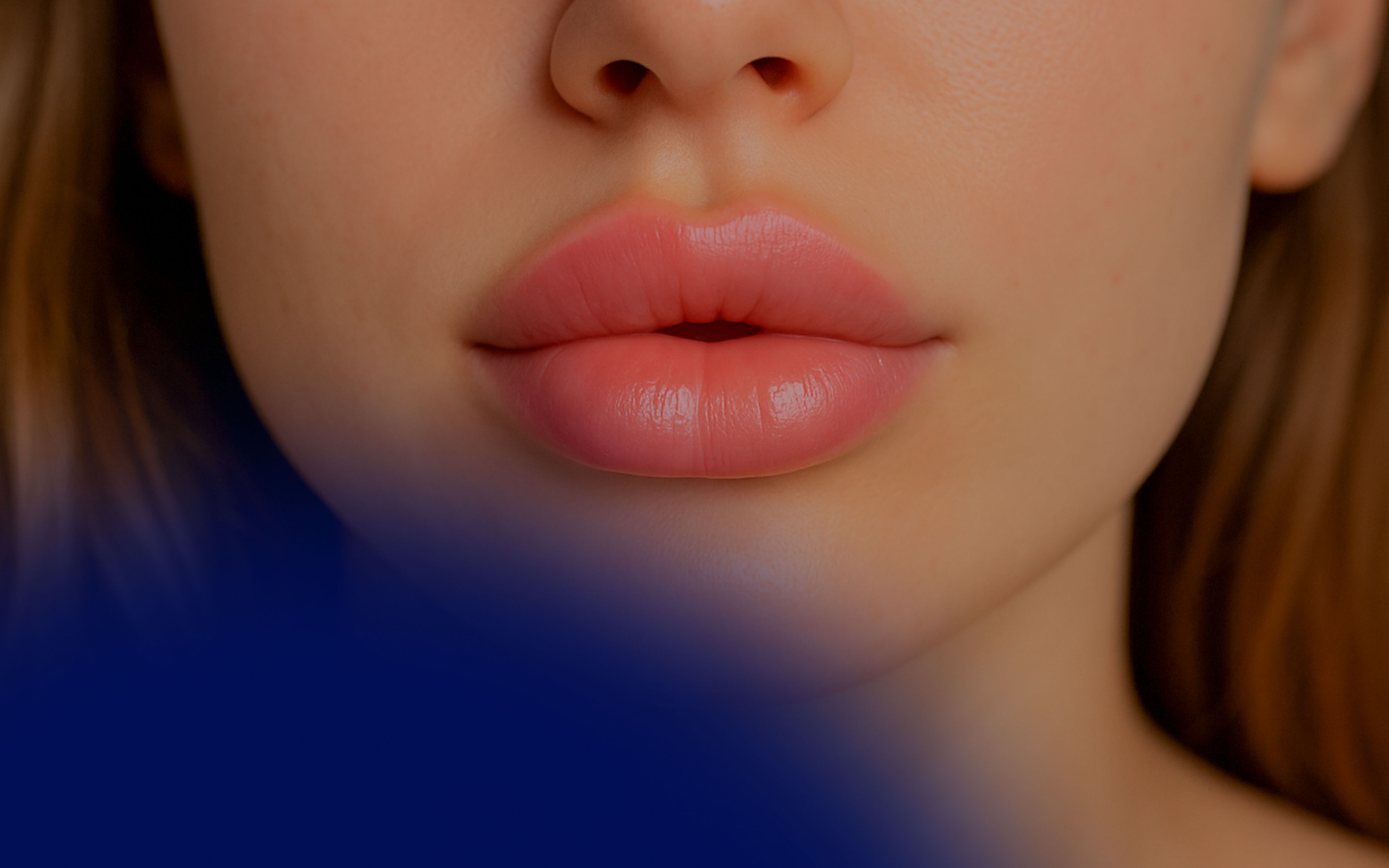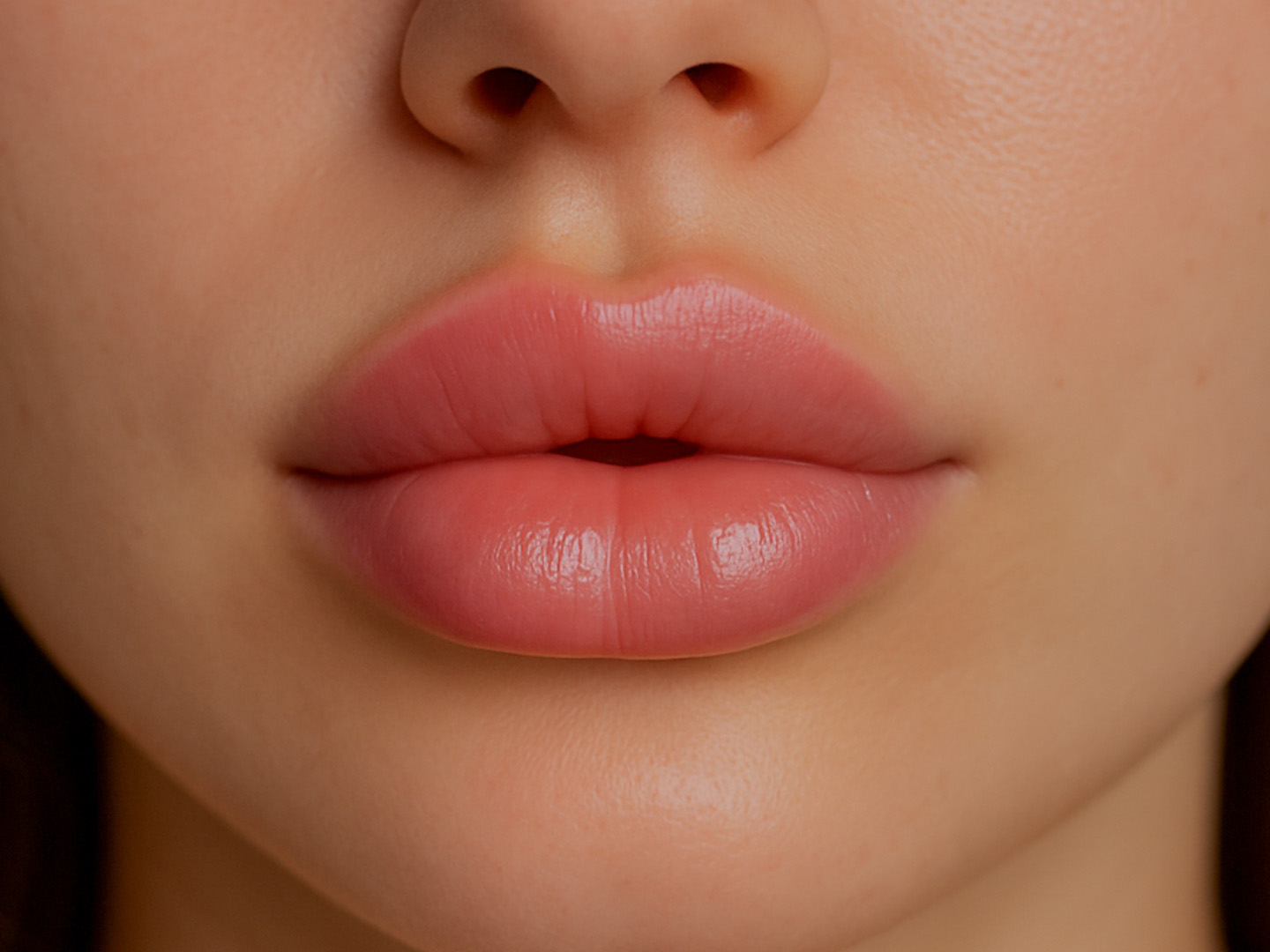
The butterfly lips filler technique is the newest trend and, therefore, one of the most in-demand approaches in modern aesthetic medicine to deliver heart-shaped lip contours. Continuing lip filler training and lip augmentation training with HubMed Ed is key to achieving safe and artistic outcomes. As patients become more informed and seek tailored results, mastering advanced procedures like the butterfly lip filler becomes essential.
What Is Butterfly Lips Filler Technique?
The butterfly lips filler technique is a specialized lip augmentation approach focused on enhancing the Cupid’s bow, lifting the upper lip vertically, and creating central projection. Instead of emphasizing horizontal width, the butterfly technique sculpts the lips into a heart-shaped silhouette.
This style is influenced by evolving beauty ideals on social media, particularly in East Asian and European markets, where subtlety and central symmetry are prioritized. The butterfly lip filler has gained traction as patients increasingly seek natural yet aesthetically enhanced results without looking artificial.

Injection Technique and Methodology
Butterfly lip technique requires precise placement and control to enhance the Cupid’s bow and central vertical height without adding bulk to the lateral lip zones. Injectors need to be aware of the following:
- Injection zones and symmetry focus: Emphasis is placed on the philtral columns, midline, and upper lip tubercles to create central lift and a heart-shaped contour. The goal is vertical projection rather than horizontal spread.
- Choice of tools: While some practitioners may prefer using a cannula, most opt for a needle due to the tight anatomical structure and the need for exact placement. Needles provide superior control for shaping small areas.
- Filler placement and volume control: Filler is injected in small amounts, typically 0.3 to 0.6 ml, to avoid overfilling. Injection depth is carefully selected based on anatomical layers, typically into the superficial submucosal plane.
- Technique awareness and aesthetic consistency: Understanding advanced injection patterns and lip dynamics is essential for achieving consistent results. Familiarity with lip filler techniques improves outcome predictability and patient satisfaction.
Choosing the Right Butterfly Lips Filler Product
Selecting the appropriate filler is essential for achieving the butterfly effect without compromising softness, movement, or vertical definition. The process should take into consideration:
- Product consistency and moldability: Choose fillers that offer high moldability and moderate cohesivity to maintain shape while allowing dynamic movement. This helps sculpt a delicate and refined lip architecture.
- Softness for natural texture: The filler should blend seamlessly into lip tissue without feeling stiff or overly dense. Soft HA-based fillers work best for maintaining a natural, plush texture.
- Recommended formulations: Products like Juvéderm Volbella XC or Restylane Kysse are commonly favored for their balance between softness and structure, making them ideal for techniques that require fine shaping.
- Duration and maintenance: Most butterfly lip filler results last between 6 and 9 months, but some patients may need touch-ups every 4-6 months to maintain definition and symmetry.
- Alignment with lip filler shapes: Selecting products that align with current aesthetic trends in lip filler shapes ensures the injector can meet patient expectations for sculpted yet natural results.
Patient Candidacy for Butterfly Lips Filler Treatment
Determining the right candidate for the butterfly lips filler technique is essential to achieving safe, predictable, and aesthetically pleasing results. It entails:
- Ideal patient profiles: Best suited for younger individuals with firm skin, well-defined lip anatomy, and minimal perioral wrinkling. These patients tend to benefit most from the technique’s focus on central lift and Cupid’s bow enhancement.
- Anatomical prerequisites: A clear and structured vermillion border is necessary to support the shape and projection created by the filler. Patients without significant volume loss respond better to subtle shaping.
- When not to use the butterfly technique: Not recommended for patients with heavily aged lips, deep vertical lines, or diminished lip support. These cases may require foundational volumization before considering refined contouring techniques.
- Expectation management: Patients seeking a dramatic or exaggerated transformation may be disappointed by the refined results of butterfly lip filler. Clear communication about likely outcomes is essential during consultation.

Pre-Treatment Assessment and Planning
Every successful butterfly lip procedure begins with a thorough facial assessment. The practitioner must evaluate lip-to-face proportions, natural curvature, and baseline asymmetries.
High-resolution photography and documentation help establish a reference point and aid in planning filler distribution. This step also allows the injector to review expected results with the patient and set realistic aesthetic goals. It’s also a valuable opportunity to identify any contraindications or patient preferences that may affect technique or filler choice.
Managing Complications and Risks
Careful planning and anatomical knowledge are vital for ensuring patient safety with the butterfly lips filler technique. This includes:
- Vascular awareness: The central lip region is highly vascularized, particularly near the superior labial artery. Precision and anatomical expertise are crucial to avoid intravascular injection and related complications.
- Avoiding asymmetry and overfilling: These are the most common aesthetic issues and typically result from uneven filler distribution or excessive volume. Practitioners must use conservative dosing and reassess symmetry throughout the procedure.
- Risk of lump formation: Nodules and lumps can develop when fillers are placed too superficially or unevenly. Proper depth and gentle massage, when appropriate, can help prevent this.
- Emergency protocols and patient education: Injectors should be trained to recognize signs of vascular occlusion and respond swiftly with hyaluronidase. Educating patients about red flags, such as blanching, prolonged pain, or dusky discoloration, empowers timely reporting and intervention.
Post-Procedure Care and Monitoring
Proper aftercare and follow-up are essential to maintaining aesthetic results, minimizing complications, and ensuring high patient satisfaction:
- Immediate post-treatment care: Advise patients to avoid touching or massaging the treated area and to refrain from applying makeup or skincare products to the lips for at least 24 hours. Applying a cold compress intermittently can help reduce initial swelling and discomfort.
- Activity modifications: Patients should avoid strenuous physical activity, alcohol, saunas, and hot beverages for 48 hours after treatment to minimize bruising and swelling.
- Follow-up evaluation: Schedule a review visit 7-14 days post-procedure to assess healing, compare with baseline photos, and determine whether refinement is needed.
- Monitoring for complications: Educate patients on signs of vascular compromise or prolonged swelling and instruct them to contact the clinic immediately if unusual symptoms occur. Documenting outcomes helps maintain treatment consistency and clinical safety.

Final Thoughts
The butterfly lips filler technique offers a refined and modern approach to lip enhancement. With its focus on central lift and vertical balance, it caters to patients seeking subtle but striking changes. Whether you’re introducing it to your practice or refining your approach, staying engaged with advanced training ensures you deliver timeless results.
FAQs
What is the difference between butterfly lips and Russian lips?
Butterfly lips focus on the Cupid’s bow and central projection, resulting in a heart-shaped look. Russian lips also emphasize vertical lift but often create a more dramatic, structured profile.
What is the new lip filler trend?
The butterfly lips filler technique is one of the newest trends, emphasizing subtle elegance, central fullness, and a naturally lifted upper lip without horizontal width.
What are the hardest lips to fill?
Lips with significant volume loss, deep perioral lines, or previous scarring are the hardest to fill. These cases often require layered treatment approaches.
What is the most popular lip filler shape?
The heart-shaped or Cupid’s bow-enhanced lips are currently among the most requested, particularly in younger patients seeking natural glamor.
What is the most natural looking lip filler?
Soft, moldable HA-based fillers are best for natural results. Butterfly lip filler techniques use these to create elegant shapes that move naturally with facial expression.
References:
- Hecht M. Different lip types and how to take care of them. Healthline. Published November 25, 2019. Accessed June 27, 2025. https://www.healthline.com/health/different-lip-types-and-how-to-take-care-of-them
- Fillers Editorial Team. Butterfly lip filler – is it really effective? Fillers.org. Reviewed by Dr. Kalmanson A. Published June 11, 2024. Accessed June 27, 2025. https://fillers.org/dermal/butterfly-lip-filler/
- Jain R, Tanawde S, Joshi S, Naik C, Garad A, Chablani D. Advancements in lip augmentation: A scoping review exploring novel techniques. J Cutan Aesthet Surg. 2024 Aug 29;17(3):167–176. doi:10.25259/JCAS_144_23. PMID: 39483655. PMCID: PMC11497539. https://pmc.ncbi.nlm.nih.gov/articles/PMC11497539/
*This article is intended for licensed medical professionals. All protocols, dosages, and treatment insights referenced herein are based on published literature. The content is not intended to encourage application, diagnosis, or self-treatment of unlicensed individuals, and should not be used as a substitute for the clinical judgment of a qualified healthcare provider.
Disclaimer:
This article is intended for licensed medical professionals. All protocols, dosages, and treatment insights referenced herein are based on published literature. The content is not intended to encourage application, diagnosis, or self-treatment of unlicensed individuals, and should not be used as a substitute for the clinical judgment of a qualified healthcare provider.

